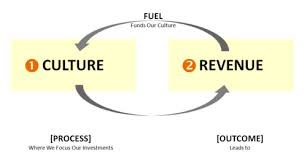In my practice as a Vistage chair, I often hear entrepreneurs say, “I don’t want to lose the culture as I grow this company” or “We are like a family; I want to keep this feeling as we grow”. And yet as the company grows, the culture inevitably changes and the owner no longer knows the name and the family of every employee.
In the early days, everyone is equal and it is all about getting the job done, getting the orders out, meeting the customer needs. Typically the owner is the chief sales officer and innovator. As a company adds more people, “management” becomes necessary and terms like “building a leadership team” come into play.
Suddenly the owner is thrust into the role of CEO. Some enjoy the change, and most long for the simpler days when everyone was pulling together without any hierarchy. And, while longing for the “old days” s/he is excited about the growth and excited about having a broader impact.
So… s/he hires some executives and asks them to show the way. All well and good, except these folks are focused on their own career path. These key executives want the opportunity to innovate and have an impact themselves. The CEO while still expected to define the vision, must also become a coach and mentor, allowing others to grow and develop as leaders.
This transition from entrepreneurial management to professional management is what Vistage is all about. Members come together to discuss these challenges and inspire each other to make the necessary changes to achieve the results they desire. The ultimate goal for most is to build a sustainable enterprise, one where the CEO’s vision can be achieved without the CEO’s handprint.
Those that are able to make these changes are those rare few that build and lead the less than 1% of companies >$100mm in revenue.







 The initial results of my Pivot are excellent. I feel I have much greater clarity regarding the next 3-5 years..
The initial results of my Pivot are excellent. I feel I have much greater clarity regarding the next 3-5 years..  John Yerger
John Yerger